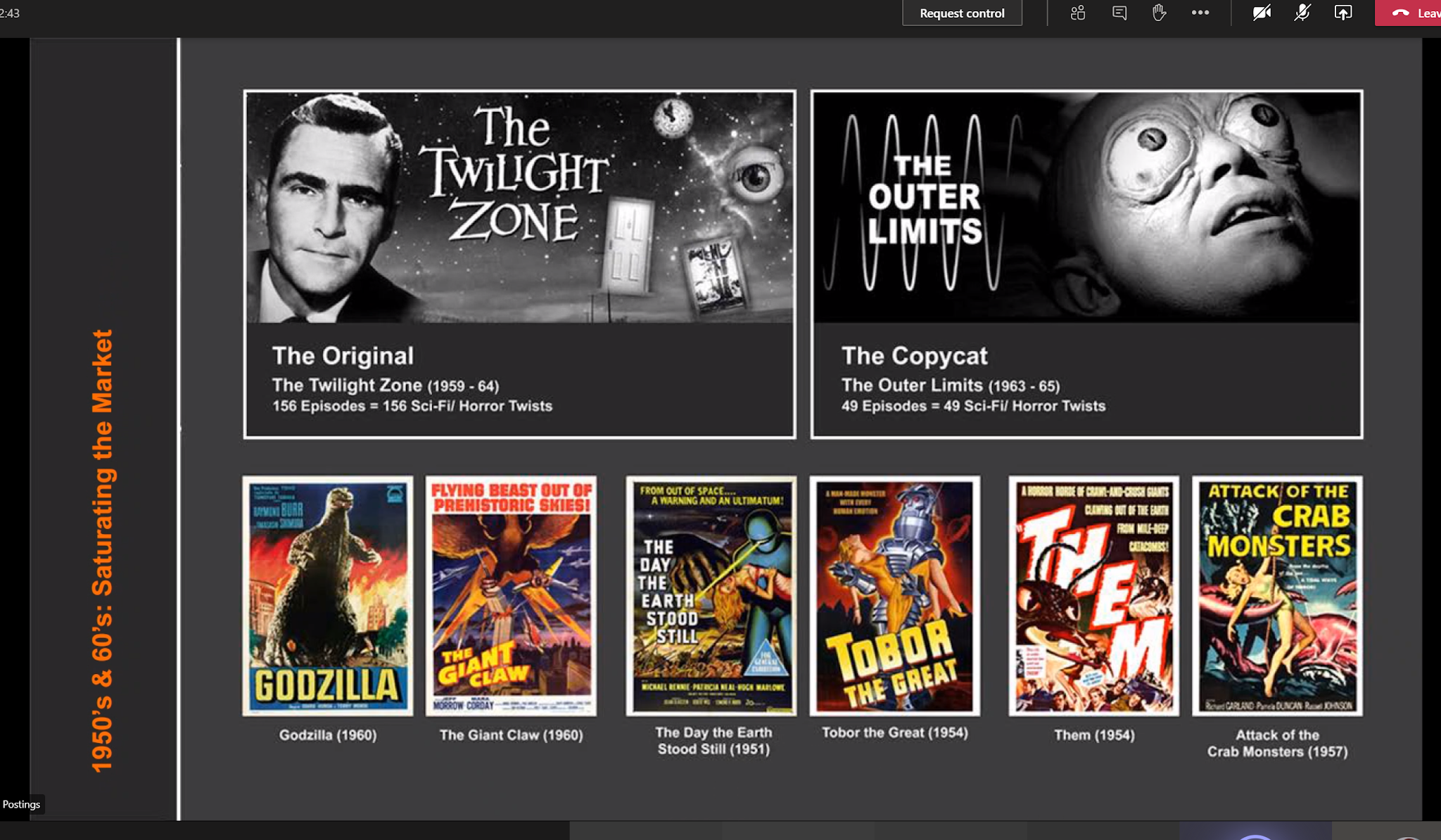B-movies and Genre Films - 1890's to the 1960's.
Why are some films on Netflix and others in Hollywood? what makes a summer blockbuster?
Entertainment is always linked to censorship
Censorship is pushing the boundaries in all directions and changes with time, meaning what was once taboo in the past can now be spoken. These can include racism and sexism.
*Formula Equals Money*
This means that money can dictate decisions made in a film, leading to a more viewer friendly feature is so to make more money.
Cinema moved from invention to industry very quickly (starting with Pathe in France) in order to make more money. Edison decided to patent the "Moviola" (A device that made holes in the side of film reels) and would sue any individual who tried capitise on it. This cause a mass exodus in people moving away from L.A to Hollywood (which was originally called Hollywood Land).
In 1912, with little to no censorship, The Birth of a Nation was made and causing massive problems due to is hugely racist storytelling. However, although it content was frown upon even in this time period, was still allowed to be shown in America.
In 1922, we have the introduction of film stars and the uptake of the "Hay's Code". Like a early version of censorship, this code allowed people who owned cinema's to show what they wanted within reason. Early Censorship was more of a case of yes or no, there was no age ratings etc. This period brought us stars such as Charlie Chaplin and Florence Lawrence. However, movie stars used to be bound under contracts that was more of a ownership, meaning stars was not allowed to work for other studios.
Charlie Chaplin moved away from this to create the United Artists, which broke away from studio ownership over actors and re-introduced creative independence.
Studios
The Major Studios - Warner Bothers, Fox, Paramount and RKO.
the Minor Major Studios - Columbia, Universal.
The Minor and Independent Studios - Monogram and Republic Pictures.
The Great Depression of the 1930's introduced "pulp" novels (the name indicates the paper its printed it was one which equals to being easily disposal), these allowed readers a easy escapism from the awful times. As with this cashing in on capitalism, double bill cinema features gave the impression of value for money. This would help to induce an audience in and would showcase a film, a news reel and and short production.
Radio Plays became radio-vised pulp novels that was popular, one famous one being The Shadows. The War of the World's news like radio casting caused chaos due to its pre-show warning being missed, viewers believed it to be real and caused a huge amount of upset.
The "Hays Code" - (1930 - 68)
*Exploitation is Equal to Money*
Very famous pulp writers (such as Lovecraft) would have written at high speeds in order to make any money, but period this is considered one the most creative. Some of the most beloved characters come outta this "high-speed" turnaround, including Conan the Barbarian, Flash Gordon, Zorro and John Carter of Mars.
Moving out of the Depression era, we got the birth of the "superhero". Characters such as Superman, Batman, Captain america and Wonder Woman emerged after the war, but they had different abilities then from what they do now. Superhero's also did not go to war, this was to show respect to returning war hero's. However, Captain America is the only exception due to him being the ideal embodiment of "America" morels.
With the release of this new medium, beliefs that comic book was corrupting young children came around. War veterans was returning from the front lines and was encountering the newly formed "teenagers society", leading to a new censorship in content to be created.
The term "Teenager" came after the war and became a social demographic, this means that money can be exploited come from this group. This lead to a growth in comic books and drive-in cinemas.
B-movies also started to change due to the paramount law case. Cinema's was originally owned by studios, but cinema managers wanted to the power to show what they wanted rather than just what the studios permit. When corporations start to become too big, they get broken down as their increasing growth will start to destroy capitalism, leading to industries unable to make money. B-movies would have been the cheap and cheerful movies produced to exploit its audiences. Monster movies being a prime example was popular with teenagers and drive in studios, so abundance of them was made.
The 1950's enable a access to multiple genres and the boom home TV sets. This shift in technology meant that cinema's where no longer special, meaning more was needed to bring in a viewership and continue to make money. Shows such as the Twilight Show, Dragnet and Dr Who become massive stories that ran over long periods, captivate its audiences. However, plot twist features and sci-fi shows saturated the market. This brought about a new production ear, the "Knock-Off".
B-movies start be considered as "Monster movies" and the cheap "Knock-off's".
The Beast from 20,000 Fathoms
Now the last piece to this review, the 5 things I like about it;







No comments:
Post a Comment
Note: Only a member of this blog may post a comment.